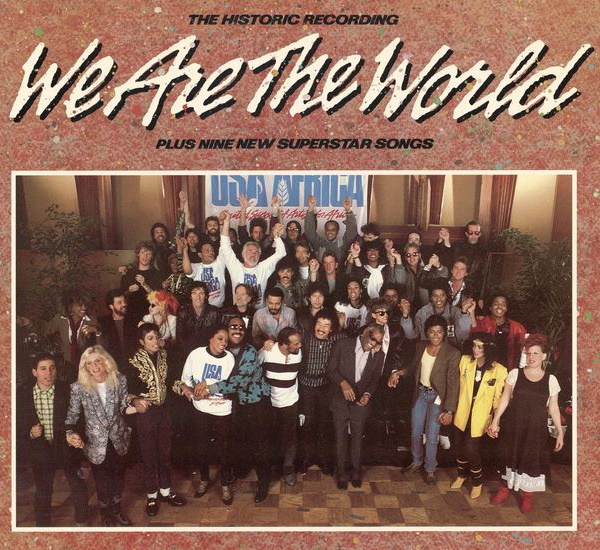
(February 2, 2024) Music fans are cheering the new Netflix documentary, The Greatest Night in Pop, the story of the making of the iconic song “We Are The World.” The all-star benefit song was one of the quintessential pop culture moments of the last half century. Inspired by the tragic famines in Ethiopia and Sudan, the idea was birthed by Harry Belafonte, materialized through the vision and connections of mega-agent Ken Kragen and superproducer Quincy Jones, and put into words and music by Michael Jackson and Lionel Richie. Expanding on the template formed several months earlier by Bob Geldof and Band Aid (“Do They Know It’s Christmas”), “We Are The World” was recorded all night in a Los Angeles studio on January 28, 1985 following the American Music Awards, and was released to great anticipation two months later.
(February 2, 2024) Music fans are cheering the new Netflix documentary, The Greatest Night in Pop, the story of the making of the iconic song “We Are The World.” The all-star benefit song was one of the quintessential pop culture moments of the last half century. Inspired by the tragic famines in Ethiopia and Sudan, the idea was birthed by Harry Belafonte, materialized through the vision and connections of mega-agent Ken Kragen and superproducer Quincy Jones, and put into words and music by Michael Jackson and Lionel Richie. Expanding on the template formed several months earlier by Bob Geldof and Band Aid (“Do They Know It’s Christmas”), “We Are The World” was recorded all night in a Los Angeles studio on January 28, 1985 following the American Music Awards, and was released to great anticipation two months later.
The song was otherworldly in its success. It topped the charts for six weeks and became the largest selling US single of all time. Its few detractors argued that the concept was simplistic, since the famines had complex causes that money alone couldn’t solve, but the effort was pure in its conception and unifying to a nation in its execution. It also inspired the groundbreaking, two continent Live Aid concert in the summer of that year.
The star-studded video for “We Are The World” was also game-changing, with the biggest artists of the day singing a song that was literally built for maximum solo opportunities around a rousing chorus. It remains one of the most popular music videos ever.
Now, as a special treat to SoulTracks readers, we look back to that memorable song, and catch up on the 21 artists who sang solos on it. Here’s our “Where are They Now” on the talents behind a truly once-in-a-lifetime musical event, listed based on the order in which their solo performances arrive in the music video, which is also shown below.
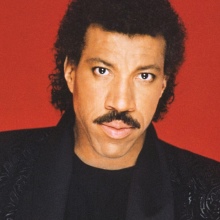 Lionel Richie (0:25) – The former Commodores lead singer was certainly in the middle of his Imperial Period as a solo artist when “We Are The World” arrived. He had won a Best Album Grammy Award for Can’t Slow Down, and his “Say You, Say Me” contribution to the movie White Nights was about to explode onto the charts. But after his somewhat disappointing follow up album, Dancing on the Ceiling, and unfortunate personal issues, Richie left the public view for a half decade. He never again reached the pinnacle of his 1980s success, but he has continued to be a force in the music business, even now in his 70s. He had a surprise #1 album in 2012 with his album of duets, Tuskegee, and 2019 brought him a monster world Hello Tour, along with a permanent spot as a judge on American Idol. He has proven himself to be one of the truly lasting stars of his generation.
Lionel Richie (0:25) – The former Commodores lead singer was certainly in the middle of his Imperial Period as a solo artist when “We Are The World” arrived. He had won a Best Album Grammy Award for Can’t Slow Down, and his “Say You, Say Me” contribution to the movie White Nights was about to explode onto the charts. But after his somewhat disappointing follow up album, Dancing on the Ceiling, and unfortunate personal issues, Richie left the public view for a half decade. He never again reached the pinnacle of his 1980s success, but he has continued to be a force in the music business, even now in his 70s. He had a surprise #1 album in 2012 with his album of duets, Tuskegee, and 2019 brought him a monster world Hello Tour, along with a permanent spot as a judge on American Idol. He has proven himself to be one of the truly lasting stars of his generation.
Stevie Wonder (0:36) – Stevie Wonder was a singular musical force in the 70s, but by the 80s his production had slowed down, even if his genius hadn’t. He followed “We Are The World” with his participation in 1986’s biggest song, the Dionne Warwick led “That’s What Friends Are For,” as well as perhaps his most underrated disc, In Square Circle. He continued to release new albums with less frequency into the 2000s, and performed tours every few years, including a sold out Songs in the Key of Life 40th anniversary tour. He had major surgery in the fall of 2019, and has recovered, to the relief of millions. By any measure, he sits on the Mt. Rushmore of artists of the 20th Century.
Paul Simon (0:43) – Little did fans know in 1985 that Paul Simon, several years past his last hit, was in the middle of recording what would be his most lauded album, the Grammy-winning Graceland. That disc set up a more adventurous period of Simon’s career, alternating with occasional live reunion performances with former bandmate Art Garfunkel. Simon has continued to record with moderate success - most recently with 2023's Seven Psalms, but it is his 60s-80s catalog that has grown in status to be recognized as among the best of its period.
Kenny Rogers (0:53) – Kenny Rogers had a run of country and pop hits in the 70s and 80s, and always seemed to know a good song when he heard one. He became purely a country charter by the 2000s, but toured tirelessly. His concerts around the US - especially his famous Christmas shows - kept him busy well into the second decade of the 21st century. Sadly, he died on March 20, 2020.
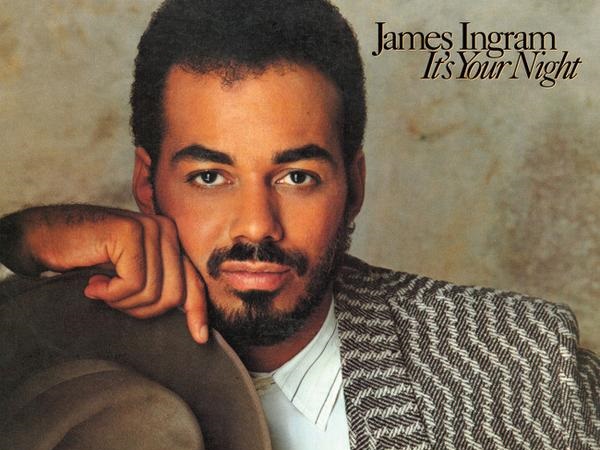 James Ingram (1:00) – After his introduction to the world on Quincy Jones’ seminal album, The Dude, James Ingram became a hot property. His Jones-produced 1983 debut album was a masterpiece, and he followed with strong duets alongside Michael McDonald (“Ya Mo Be There”), Patti Austin (“Baby Come To Me”) and Linda Ronstadt (“Somewhere Out There”). Hits became more sporadic after We Are The World, but Ingram had a surprise #1 with the Thom Bell-produced “I Don’t Have The Heart” in 1990 and followed as one-quarter of the now legendary crew on Quincy Jones’ bedroom hit, “The Secret Garden.” In the new millennium, Ingram toured semi-regularly and recorded Gospel music, but suffered from cognitive problems for a period before dying of brain cancer on January 29, 2019.
James Ingram (1:00) – After his introduction to the world on Quincy Jones’ seminal album, The Dude, James Ingram became a hot property. His Jones-produced 1983 debut album was a masterpiece, and he followed with strong duets alongside Michael McDonald (“Ya Mo Be There”), Patti Austin (“Baby Come To Me”) and Linda Ronstadt (“Somewhere Out There”). Hits became more sporadic after We Are The World, but Ingram had a surprise #1 with the Thom Bell-produced “I Don’t Have The Heart” in 1990 and followed as one-quarter of the now legendary crew on Quincy Jones’ bedroom hit, “The Secret Garden.” In the new millennium, Ingram toured semi-regularly and recorded Gospel music, but suffered from cognitive problems for a period before dying of brain cancer on January 29, 2019.
Tina Turner (1:07) – Tina Turner had just made the unlikeliest of comebacks in the year before “World.” Following her divorce from Ike Turner, she appeared unable to breakout as a solo artist until 1984’s Private Dancer, which spawned multiple hits, including her signature song “What’s Love Got To Do With It.” That started a decade-long run as an international sensation, both recording and onstage. Her tumultuous life also became the subject of books and movies, and she continued to perform impressively, looking and sounding fantastic past age 80. Turner stood as an inspiration and a story of true perseverance for artists everywhere, right through her death in May of 2023.
Billy Joel (1:13) – There weren’t many more reliable hitmakers in the 80s than Billy Joel, a talented singer and songwriter who was fearless in incorporating styles from rock to soul to punk to doo wop on his albums of the decade. He was still at the top of his game when he announced that 1993’s River of Dreams would be his last studio album. Few believed him, but it indeed was the end of an incredible string. Since then, he has toured regularly (a few times with Elton John), and has a standing monthly date at Madison Square Garden that is one of NYC’s toughest tickets to score. And on the day of this writing, Joel issued his first pop single in three decades, "Turn The Lights Back On."
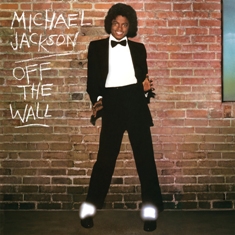
Michael Jackson (1:20) – Michael Jackson was the biggest star in the world in 1985, and his next release, Bad, kept him there through the late 80s. The three album combination of Jackson and producer Quincy Jones was one of the most critically and commercially successful of all time, and those discs stand as pop/soul classics today. While Jackson continued to record with success into the 00s, he unfortunately received more press for his unusual behavior and the relentless accusations against him. On the eve of what was planned as a monstrous comeback tour in June 2009, Jackson died suddenly and tragically, leaving the music world in shock. Books and documentaries of the past decade have made his legacy more complex, but his music lives on, largely undefiled.
Diana Ross (1:32) – Undoubtedly one of the most talented, glamorous, and admired singers of the past six decades, Diana Ross is among the few artists who can be identified simply by their first name. She had already had two Hall of Fame careers by the time of “We Are The World,” but she was approaching the end of her chart-topping days. She had one more big album with the Barry Gibb-produced Chain Reaction, but her subsequent return to Motown resulted in only moderate success over several releases. A 2000 reunion with the Supremes resulted in back-and-forth accusations and an early exit; however, Ross recovered with more solo touring as well as her own humanitarian work. She has received countless awards over the past 20 years and, now in her late 70s, still selectively performs.
Dionne Warwick (1:49) – Dionne Warwick was a pop music sensation in the 1960s via her stylish interpretations of the songs of Burt Bacharach and Hal David. After a lean decade, she returned with a series of strong adult contemporary albums in the 80s. Soon after “We Are The World,” she issued the AIDS benefit song, “That’s What Friends Are For,” which became the top selling song of 1986. She continued to a lesser reception after that, finding more notoriety in the 90s as the spokesperson for the Psychic Friends Network on television commercials. She also worked on her various charitable causes in between albums, and was named a UN Goodwill Ambassador. Warwick continues her charitable work and her music past her 80th birthday.
Willie Nelson (2:05) – Willie Nelson is ageless. He was a noted country music songwriter when he became a late blooming star, racking up several huge albums in the late 70s and early 80s with his laid back, acoustic style. Nelson already seemed old in 1985, but he is still plugging along today. Known as much for his love of pot and his problems with the IRS after “World,” Nelson took his outlaw country brand and did his thing the way he wanted, bringing along millions of fans with him. He also applied his personal passion toward the problems of food security and farming in America, and created the Farm Aid benefit concerts, raising millions to help those people hurting in the heartland. He continues to grace his fans with performances at the ripe old age of 90.
 Al Jarreau (2:10) – Al Jarreau was an otherworldly vocalist who found a huge audience in the 1980s with a series of Jay Graydon-produced elegant pop-jazz records that were as smile-inducing as they were exquisitely performed. He was already in his 40s when true fame came his way, and, after his spurt of hits in the 80s, he balanced his popular success with his more artistic desires for the remainder of his legendary career. He died in February 2017, leaving a treasure trove of eclectic, inspired music behind.
Al Jarreau (2:10) – Al Jarreau was an otherworldly vocalist who found a huge audience in the 1980s with a series of Jay Graydon-produced elegant pop-jazz records that were as smile-inducing as they were exquisitely performed. He was already in his 40s when true fame came his way, and, after his spurt of hits in the 80s, he balanced his popular success with his more artistic desires for the remainder of his legendary career. He died in February 2017, leaving a treasure trove of eclectic, inspired music behind.
Bruce Springsteen (2:16) – To many, The Boss was a surprise participant in "World," but his presence brought along the rock audience to the proceedings and also demonstrated the social awareness that has been at the center of Springsteen’s fifty year career. In 1985, he was coming off his biggest album, Born In The USA, and he was red hot. He would spend the next three plus decades alternating between accessible rock albums and personal acoustic releases, and through his lyrics he arguably became the conscience for the rock world at times when the genre was more focused on glamor and posing. Today, his concerts continue to be must-see, three hour events, and he is regarded as one of rock music’s all-time greats.
Kenny Loggins (2:22) – Kenny Loggins had hits as part of the duo Loggins and Messina, but his solo career took him to another level. His strong songwriting and his crystal clear tenor voice drove a bunch of albums and singles in the 80s, and his soundtrack work (Footloose, Top Gun, Caddyshack) repeatedly took him to the top of the charts. In the 2000s, Loggins became part of the occasional country trio Blue Sky Riders, and he continues to perform in concert as a solo artist. In 2023, Loggins announced that that year's tour would be his last.
Steve Perry (2:29) – As the frontman for Journey, Steve Perry was the voice behind many of the quintessential power ballads of the 80s and 90s, as well as the rock classic, “Don’t Stop Believing.” He continued to have success with the group until his health issues led to a somewhat acrimonious split in 1998, as Journey went on without him. Perry remained quiet musically for most of the 2000s, but returned in 2018 to release the album Traces, which hit the US top 10.
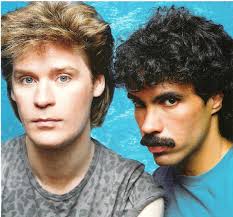 Daryl Hall (2:35) – Hall & Oates have had more career turns than a cat has lives. From early 70s folkies to soulful balladeers to pop/rock superstars, they became the best selling duo in history. And they were scorching at the time of We Are The World. Things got tougher for the twosome in the 90s, as their bouncy 80s songs and videos appeared so uncool to a new generation. But history has a way of making things right, and now all stages of their musical history are rightly revered, and those songs (those songs!) now get the shine they deserve. Hall and Oates were back on outdoor stages touring every summer through the 10s, but now perform separately after a falling out. Hall also cleverly created a personal jam venue in his barn and brought along cameras, and Live From Daryl’s House was born. With popular musical guests sharing time with Hall and his band, the show has been a web and television favorite for more than a decade, and created a new generation of fans for the singer.
Daryl Hall (2:35) – Hall & Oates have had more career turns than a cat has lives. From early 70s folkies to soulful balladeers to pop/rock superstars, they became the best selling duo in history. And they were scorching at the time of We Are The World. Things got tougher for the twosome in the 90s, as their bouncy 80s songs and videos appeared so uncool to a new generation. But history has a way of making things right, and now all stages of their musical history are rightly revered, and those songs (those songs!) now get the shine they deserve. Hall and Oates were back on outdoor stages touring every summer through the 10s, but now perform separately after a falling out. Hall also cleverly created a personal jam venue in his barn and brought along cameras, and Live From Daryl’s House was born. With popular musical guests sharing time with Hall and his band, the show has been a web and television favorite for more than a decade, and created a new generation of fans for the singer.
Huey Lewis (2:49) – Success came to Huey Lewis late in life, but his fun, unassuming approach to music led to a decade of heady success. He got his one line in "World" when Prince cancelled at the last minute, and Lewis made the most of it. After their wave of hits, Huey Lewis with his band The News became a touring favorite around the world, even as they became more adventurous on record, with homages to classic jazz, soul and early rock. Meniere's disease has recently caused significant hearing problems for Lewis, but it didn’t stop him from issuing the enjoyable new album, Weather (his first in a decade), early in 2020.
Cyndi Lauper (2:55) – Cyndi Lauper was a new star at age 32 when she was invited to participate in “We Are The World,” but she boldly made her mark with the song’s most memorable solo performance. Lauper had arrived with a smash out of the box, “Girls Just Want To Have Fun,” and had a nice run that decade. She continued to record to strong critical reviews – but less commercial success – through the 90s, and spent increasing amounts of her time writing for other artists. Lauper has also scored on Broadway, with roles in The Threepenny Opera and Kinky Boots, and found her way onto several reality television shows.
Kim Carnes (3:00) – Kim Carnes has the shortest solo of “We Are The World” (just two words), but that’s more than Smokey Robinson or Jeffrey Osborne had. With her distinctively raspy voice, Carnes will always be known for the smash “Bette Davis Eyes,” however she was far from a one hit wonder. She had several solo charters as well as songs with Kenny Rogers (“Don’t Fall In Love With a Dreamer,” “What About Me”), and Gene Cotton. Carnes moved to Nashville in the 90s and established a second career as a top tier songwriter for country artists. She continues to be active as a writer and occasional performer, and lives in Nashville with her husband of more than a half century, Dave Ellingson.
Bob Dylan (3:47) – He was the poet of the tumultuous decade of the 1960s, and by 1985, Bob Dylan was already a grizzled veteran. It would have seemed ludicrous then to imagine then that he would still be recording and have a number one album in 2020 at age 79, but that’s what he accomplished with Rough and Rowdy Ways. While his recent albums and concerts have been hit-or-miss, and his voice has been largely tattered by the years, Dylan is singular in his contribution to the development of the folk side of rock music over the past 60 years. He and his incredible collection of compositions are revered by multiple generations of music fans, including the members of Nobel Committee, who issued him the Nobel Prize for Literature in 2016.
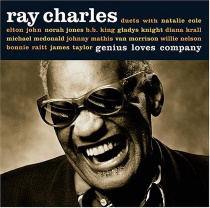 Ray Charles (4:40) – Young music fans of today may only know Ray Charles from the 2004 Jamie Foxx movie, but Charles was a trailblazer on many levels. His vast collection of songs found their way onto pop, soul, country and jazz radio, and his immense talent was only bounded by the limitations set on it by racism and the music business of the 1950s and 60s. Charles’ solo in “We Are The World” was rightly the final one, and the song gave him the honor his vast contributions warranted. Charles continued to perform for nearly two decades after “World,” even scoring a final number one hit album, Genius Loves Company, two months after his death in 2004.
Ray Charles (4:40) – Young music fans of today may only know Ray Charles from the 2004 Jamie Foxx movie, but Charles was a trailblazer on many levels. His vast collection of songs found their way onto pop, soul, country and jazz radio, and his immense talent was only bounded by the limitations set on it by racism and the music business of the 1950s and 60s. Charles’ solo in “We Are The World” was rightly the final one, and the song gave him the honor his vast contributions warranted. Charles continued to perform for nearly two decades after “World,” even scoring a final number one hit album, Genius Loves Company, two months after his death in 2004.
Beyond the soloists, it was a star-studded room, with a choir that included Harry Belafonte, The Jacksons (including LaToya), Jeffrey Osborne, The Pointer Sisters, Dan Ackroyd(?!?), Bette Midler, John Oates, Smokey Robinson, Bob Geldof, Waylon Jennings, Bill Gibson, Sean Hopper, Sheila E, Johnny Colla, Mario Cipollina, and with an all-star backing band of John Barnes, David Paich, Ian Underwood, Paulinho da Costa, Louis Johnson, Michael Omartian, Greg Phillinganes, and John Robinson. And there were seemingly just as many major acts who wanted to be invited into the room, but weren't (pop country star John Denver once said his omission was one of the saddest moments of his career).
There were other all-star benefit songs after “We Are The World,” but none ever came close to its commercial success or its impact on the nation. It was a time of megastars who easily crossed musical boundaries, and the magic of a singular, noble purpose that is rarely caught. Many of us still get chills watching the original video, and with good reason: It was a unique moment that will likely never be replicated in the more musically segregated world of today. And it is a really good song. Take a look again below, and smile for the thousandth time.
By Chris Rizik
